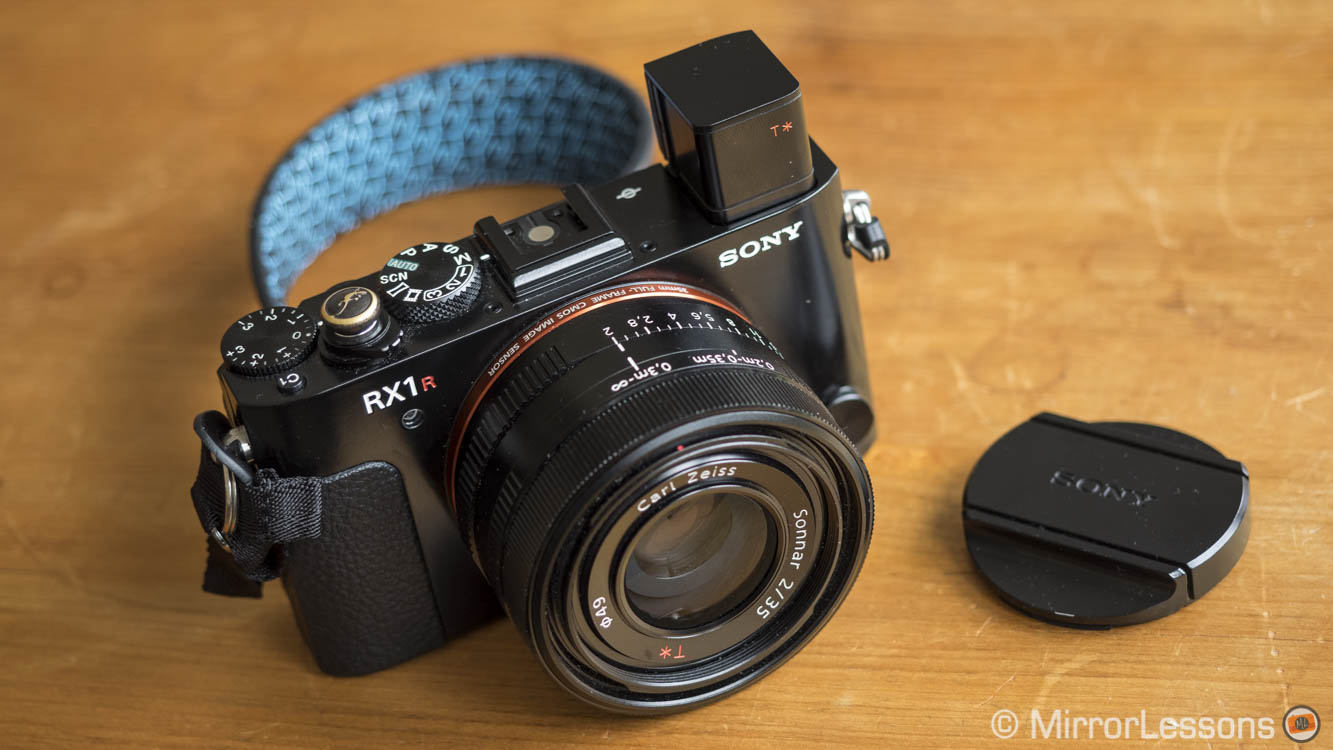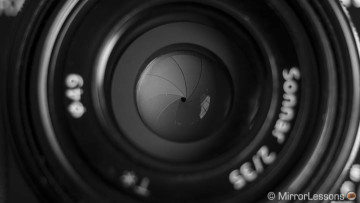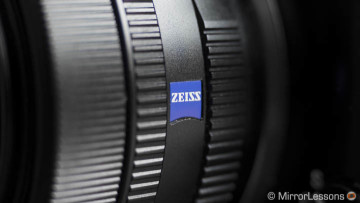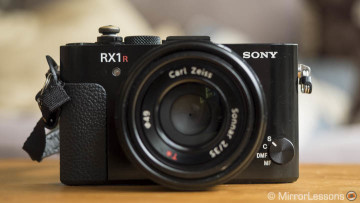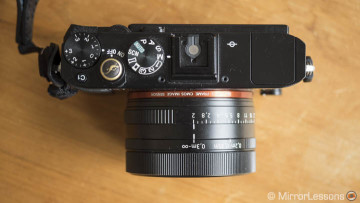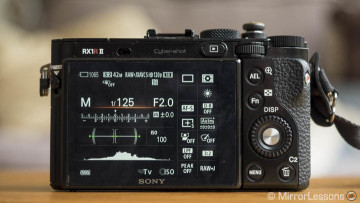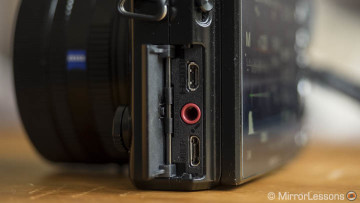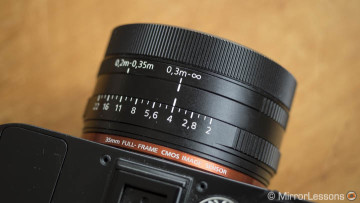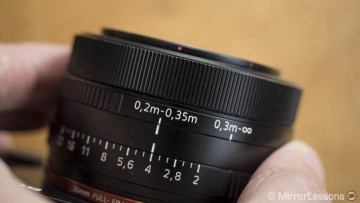The original Sony Cyber-Shot DSC-RX1 was more important than you might think. Despite being a niche product and, at the time of release, probably also an experiment, it opened up the floodgates to more full-frame mirrorless products that the company would introduce later on. The first RX1 was unprecedented because it housed a 35mm full-frame sensor inside an extremely compact body. This is also why it retained the label ‘Cyber-Shot’, the name of Sony’s compact camera series.
Just before the release of the A7 series, Sony released a small variation on the RX1 – the AA filter-less RX1r. In the meantime, it was also pushing the boundaries of compactness with the RX100 line-up by managing to pack it with lots of advanced functionalities without increasing the body size.
Two years later, it was only natural to see an upgrade to the RX1 range – a product that features the most recent technology taken not only from the full-frame A7 series but also the compact RX100 series.
The RX1r II has one of the best sensors on the market, a great Zeiss lens and is so small that you can easily fit it inside a medium-sized jacket pocket. On paper, it sounds like the perfect camera to carry around with you at all times: the ultimate and inseparable companion.
The RX1r mark II is the kind of camera that immediately triggers G.A.S. (Gear acquisition Syndrome). However perfect specifications don’t always make for a perfect camera.



Sony Cyber-Shot DSC-RX1r II main specs
- Sensor: 42 MP 35mm full frame BSI Exmor R CMOS
- Lens system: fixed Zeiss Sonnar 2/35
- Lens specs: f/2 to f/22, 8 elements in 7 groups (3 aspherical and AA elements), 9 circular aperture blades, T coating, Min. focus distance of 20cm
- Weatherproof: None
- Internal Stabilisation: None
- Autofocus: Hybrid with 399 phase and 25 contrast detection point
- Continuous shooting: 5 fps , 2.5 fps
- ISO Sensitivity: 100 – 25600 ISO (pull 50 and 64, push 51200 and 102400)
- Shutter Speeds: 1/4000 to 30 seconds (1/2000s at f/2)
- Viewfinder: 0.39in XGA OLED electronic viewfinder with 2,360k dots, approx. 100% FOV coverage and 0.74x magnification
- LCD Screen: tilting 3″ LCD monitor (1,228k dots)
- Movie recording: XAVC S Full HD up to 120fps
- Built-in Flash: No
- Extra Features: WiFi, NFC, Panorama
- Dimensions: 113.3 x 65.4 x 72mm
- Weight: 507g (including battery and memory card)
[toc heading_levels=”3″]
What I like the most: sensor + lens = match made in heaven
I usually don’t insist on the image quality of digital cameras nowadays because I believe that all the most recent sensors are capable of delivering excellent results, regardless of their size or technology. In the case of the RX1r II, I must make an exception.
If there is one reason to be interested in this camera, it is the image quality.
The 42MP BSI sensor is the same one found inside the A7r mark II and has been rightfully dubbed one the best 35mm sensors ever made. You get lots of resolution, great dynamic range and excellent high ISO performance despite the high megapixel count. I won’t go into it too much because you can read my dedicated article about the A7r II image quality where I analyse the results in-depth. All you need to know is that with the RX1r II, you get the same results.

Click on the image to open the full res version

Click on the image to open the full res version

Click on the image to open the full res version

Click on the image to open the full res version
About the variable Low Pass Filter
With the RX1r mark II, Sony introduced the world’s first variable low pass filter. This surprised me at first since the A7r II doesn’t have one and I’ve never come across serious moiré issues with it. Sony suggested that it can be helpful for specific textures (textiles mostly) or other very fine details that when shot at a certain distance can produce some moiré.
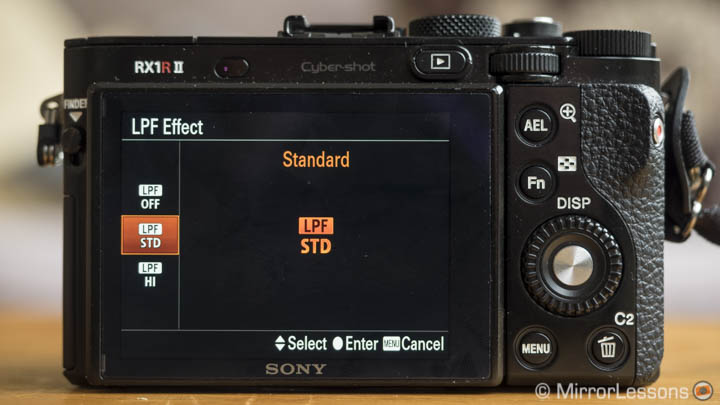
I took several examples at home to try and find a good case study and the only one I came across was the shot of my jacket below. If we analyse the image more closely, we can detect some tiny moiré artefacts in certain areas of the jacket when the filter is turned off. Choosing the Standard option improves it just a little while the Hi option gets rid of it almost entirely.

Click on the image to open the full res version
I tried to use the moiré removal tool in Lightroom and it did a better job. So even if you encounter some moiré from the A7r II or RX1r II with the Low Pass Filter turned to Off, you can easily get rid of it and retain better sharpness. That’s why I always kept it disabled during my two weeks of testing.
[twentytwenty]


[/twentytwenty]
Then we have the lens. When the first RX1 came out, many reviewers and photographers claimed that this particular Zeiss Sonnar was one of the best 35mm lenses ever designed. It would be dishonest of me to say that I’ve tried them all, but if there is one thing that makes the RX1 series special, irregardless of the model or sensor, it is the lens.
Sharpness is excellent at f/2 and it peaks at f/4. The corners are almost as good as the centre at all apertures. The bokeh is smooth and creamy with nice specular highlights, few onion rings and little bokeh fringing. The ability to separate the subject from the background is excellent and the transition from in-focus to out-of-focus areas is smooth and very pleasant. Even vignetting is well contained at f/2. Barrel distortion disappears with the lens profile applied to the in-camera JPG or RAW file.
This is truly one of the best 35mm lenses I’ve ever used. The lens is worth half the price of the camera, if not even more. After using it, you will understand why.

Click on the image to open the full res version

Click on the image to open the full res version

Click on the image to open the full res version

Click on the image to open the full res version


Click on the image to open the full res version
The lens also has good macro capabilities that you can easily access by turning the dedicated macro ring on the barrel. The minimum focus distance is 20cm. You won’t get true macro shots but it is enough to get close to various elements and objects. Once again the performance of the lens is stunning in terms of sharpness and bokeh.

Click on the image to open the full res version

Click on the image to open the full res version

Click on the image to open the full res version
One feature I was surprised to see missing from this camera is the APS-C mode. You can find it on many A7 cameras including the A7r II. Given the nature of the RX1r II, whose prime lens is non-removeable, a crop mode would have been a welcome feature. I admit that I don’t use these options very much but I am sure that other users would appreciate it, especially if they don’t own any other cameras. Leica did a similar thing with the Q camera giving you the opportunity to crop the sensor to an equivalent 35m or 50mm field of view. Since the RX1r II has lots of megapixels, it would have been easy to have at least a “50mm mode” with 18/20MP which is still an excellent resolution.
Nitpicking: colour profiles and two weaknesses of the 35mm lens
The Sony colour profiles are not my favourite and the RX1r II is no exception. Some of them give you good JPG results like the Light or Autumn Leaves creative styles but otherwise I always prefer to deal with the RAW files. For example the skin tones often have a dominant yellow tint. The AutoWB also tends toward a cooler rendering but you can edit this in the menu.
[twentytwenty]


[/twentytwenty]
If we try to search for a few weak points of the Sonnar lens, I could mention that flare resistance is not the best I’ve seen from a Zeiss product (but that is also partially Sony’s fault for not supplying a hood with the camera). The most annoying flare is a rainbow type in direct sunlight. You can also find chromatic aberration in the corners at the f/2 but it is reduced from f/2.8.

What I like: Electronic viewfinder and tilting LCD
I would say I used the electronic viewfinder only 40/45% of the time because, being such a small camera, we instinctively want to use it like a regular compact camera. But when it becomes necessary, I am very glad I can just pop it out, especially when dealing with backlit situations or very sunny conditions. The pop-up mechanism is very similar to the RX100 III and RX100 IV but feels more solid. The only time I felt the need to retract it was when I placed the camera inside my bag.
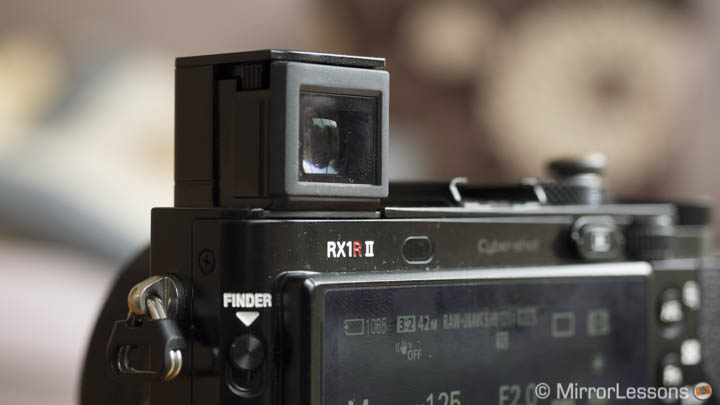
The EVF is small but has a good magnification factor (0.74x). It is easy to compose with, even with my glasses on. Sony also provides an eyecup that should enhance the user experience but unfortunately it wasn’t in the box with the review sample I received. If you set Display Quality to High, you also get better resolution. Otherwise it decreases a little with the normal mode. The former reduces the battery life so I advise you to keep it to normal.

The LCD screen has good resolution and can be tilted up 110° and down 40°. I’m glad Sony didn’t stick with a fixed screen like that of the previous RX1 and RX1r. A tilting screen on such a camera (well, all cameras really) makes all the difference.
Sony continues to ignore the usefulness of touch capabilities. While not essential on this specific model, it would have been a great addition.
What I like: Autofocus performance
The RX1r II shares the same autofocus system as the A7r mark II. You get 399 phase detection points and 25 contrast detection areas. Unsurprisingly, the autofocus performed really well in various situations including backlit conditions and street events. The performance is fast in macro mode and low light as well.


The camera focuses fast in Single-AF but I would often switch to C-AF to take advantage of the phase detection points. You can also use the Eye AF for portraits by assigning it to a custom button (in my case the AEL button). It’s very useful for street portraits and other similar situations. Face detection is not as effective however and will sometimes confuse the subject with the background.


The camera lacks a few options you can find on the A7r II. There is no Zone Area which is a shame as I find it very useful, and the Lock-On AF Expand Flexible Spot is also missing.
The RX1r II can shoot as fast as 5fps in continuous AF which is totally fine for this type of camera. I rarely found myself in need of the burst mode anyway. Note that the performance is better with JPGs. With RAW the buffer fills up very quickly.
What could have been better: video capabilities
Given that the RX1r II has the same sensor as the A7r mark II, you might have expected the same video capabilities but instead it has been stripped of those extra specifications. There is no 4K video, Super35 mode mode, full pixel readout or picture profiles (also meaning no S-log2).
This is probably due to the processor engine and power consumption: the battery is very small and with the body being so tiny and the electronic components being so close together, my guess is that overheating was the main obstacle that Sony couldn’t (or wouldn’t) overcome, together with the amount of data the camera has to process.
Actually even in Full HD, the battery of the RX1r II decreases very rapidly.
After shooting 4 short clips for less than 30s at 120fps, my battery level went from 3 bars to indicating that there was no juice left. When I switched back to still mode, the bars went up again but the battery life was affected and didn’t last too long after that.
You could ask how the brand managed to include 4K video on the RX100 IV. The answer is that the sensor is much smaller and also has a VRAM memory stacked to it to process all the information.
What about Full HD video quality? Well, you get the XAVC S codec that allows you to shoot up to 60fps in 1080p and 120fps in 720p. The footage is not as sharp as with the A7r II though: there is more aliasing especially when shooting at 720p.
There is an electronic stabilization option (called Steadyshot) since neither the camera nor the lens are stabilised. It is good enough but won’t stabilise the footage perfectly. It can also increase jello and distortion effects when moving. It won’t work when recording at 120fps.
Below you can watch a few footage samples shot with the RX1r II.
Mixed feelings: design and ease of use
The RX1r II has a very robust magnesium alloy build. Even the accessory and battery/SD card ports feel very solid. The camera isn’t weather sealed and isn’t particularly light at 500g.
The dials are robust and precise to turn. The rear dial and control wheel are looser but work well for their respective functionalities. The shutter release button is threaded and can accommodate a soft release button.
[twentytwenty]
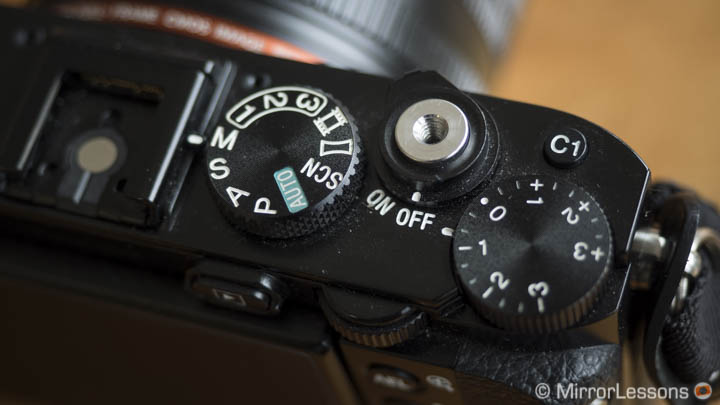
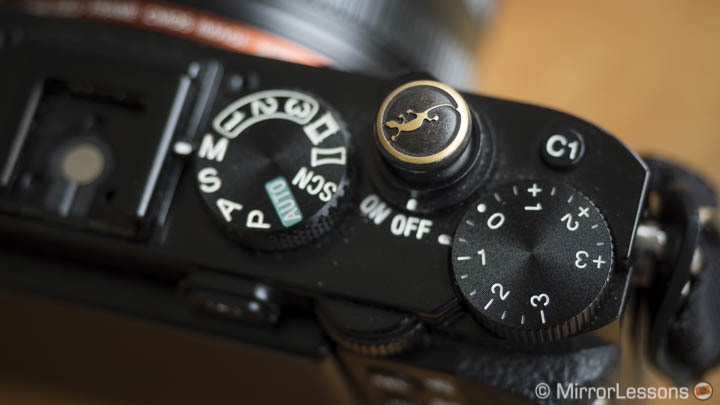
[/twentytwenty]
The premium build quality applies to the lens as well. The clicking aperture ring turns in 1/3 steps and proved very precise when operating it. It isn’t too close to the camera body meaning it is easy to grab and it features a ribbed tab on either side. That said, I wish they had extended these along the entire ring to make it easier to find when composing a shot through the viewfinder.
The macro ring is very pleasant to turn. The focus ring is of course a “fly-by-wire” type that gives you good level of precision. Even the metal cap feels very solid and is easy to attach or detach.
The level of customisation on the camera is good. You have two function buttons, the control wheel on the rear, an AEL button and a Fn button where you can change 12 different entries within the quick menu.
With all these positive things said, unfortunately it isn’t always the easiest camera to use.
The most annoying thing is the focus mode selector on the front. The idea is clever but the execution isn’t so great: it is hard to find when shooting, and hard to turn as your finger always slips away from it. I often need to use three fingers to turn it.
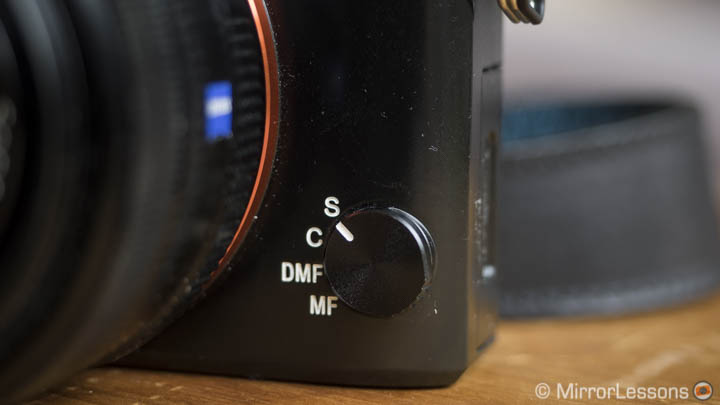
There isn’t much of a grip which is more relevant for someone like me who has big hands. I guess this is one of the compromises of such a compact camera but I wonder if Sony could have made the effort to design a more prominent grip on the front and rear (thumb grip). Your palm occupies almost the entire right side of the camera’s rear so not a lot of buttons are quick and easy to access. Everything feels too cramped together.
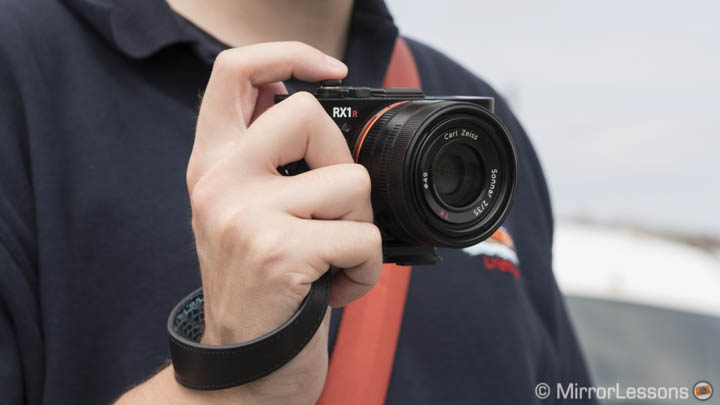
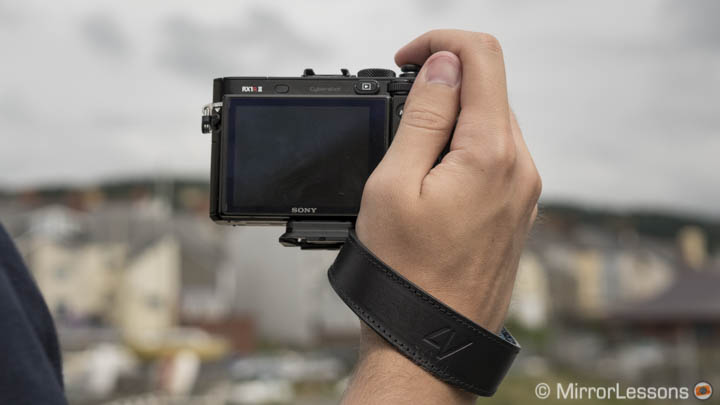
Then there is a thought about the design in general. I understand that Sony wanted to make the smallest digital 35mm camera on the market but while this sounds great in a press release, it does sacrifice some of the usability. The camera is smaller than a Fuji X100T so it would have been a good idea to make it slightly larger to accomodate a better grip, increase the space between the buttons and perhaps add a few extra ones.
I would have also tried to reduce this camera to the essentials. Why not replace the shooting mode with a proper shutter speed dial since we already have the aperture ring and the exposure compensation dial? More than carrying something that is a few millimetres smaller, it is things like this that can make a difference in daily use especially on a small camera like this.
What I don’t like: lack of stabilisation and “unsafe” shutter speeds
You won’t find optical or sensor stabilisation on this camera. My guess is that the size of the camera is once again the main obstacle. The Sonnar lens is actually longer than you would think and takes up almost all the space inside the camera. The sensor is basically confined to the very rear just behind the LCD screen.
No stabilisation means you have to be careful at certain shutter speeds but given the relatively short focal length, I would have expected more safe shutter speeds than what actually is possible.
The RX1r II has a leaf shutter mechanism. The advantage is a very quite sound, high speed sync with flash and little risk of shutter shock. That said, I ended up with blurry images many times between 1/40 and 1/100s. I even attached a soft release button but it didn’t help. I suspect that the camera is more sensitive to micro shocks because of the large number of megapixels and the shutter release button creates some micro movements when pressed. I did manage to bring back sharp shots at these critical shutter speeds but not without multiple attempts with a 40-50% hit rate.

Click on the image to open the full res version
I usually ended up choosing a safe shutter speed manually and compensating with the ISO since the performance of the camera is excellent in that department.
The leaf shutter also introduces a limitation when shooting at f/2: the maximum speed available is 1/2000s in comparison to the max. 1/4000s you get with the other apertures. This is a common issue with this type of shutter mechanism. However I am surprised that Sony didn’t implement a built-in ND filter or an electronic shutter to allow faster shutter speeds and solve this small limitation.
What I don’t like: battery life and no second battery provided
Fitting such amazing technology into such a small camera comes at a cost and that cost is mainly battery life. To give you an idea, I shot approximately 230 images in 4 hours during an afternoon walk in the woods and around a lake. I turned the camera off in between shots to extend the battery life and kept the display quality to standard. I set the LCD screen to Sunny Weather to improve the brightness. I didn’t shoot video, nor did I use C-AF or continuous shooting. This tells you that for a day trip, the battery will last half the time if you are lucky. Recording video will make things far worse.
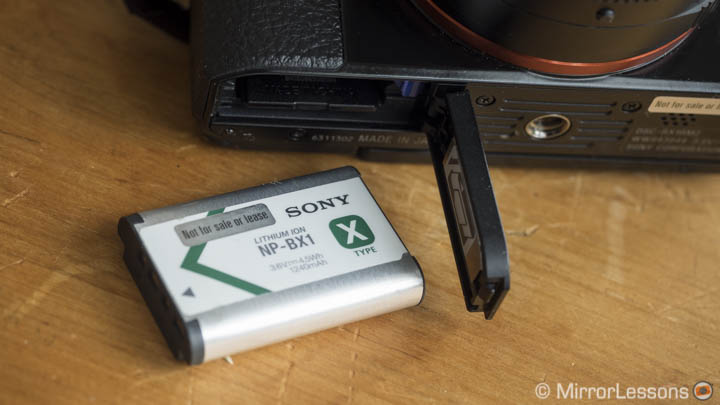
In a way I understand this limitation: it’s a small camera that uses the same battery type as the RX100 series so we can’t expect miracles. However including a second battery as Sony does for the A7r II or A7s II would have been a welcome addition considering the price of the camera. At least Sony includes the BC-DCX battery charger that can also be used via USB.
The camera can be charged directly via the USB port and I often used my Anker mini charger to give the camera a boost when I took a break from shooting. For example it helped me take some final sunset shots after stopping for dinner at a pub. You also have the option of third party batteries like Patona and you can easily find a cheap bundle with 2 batteries and a charger.
Price and the RX1 / RX1r
The RX1r II is not a cheap camera and is currently priced at more than $3000 – a luxury price tag for a compact camera with no interchangeable lens option. Concerning image quality, you get the same sensor as the A7r II (that costs about the same for the body alone) and a Zeiss Sonnar lens that sold alone would probably cost more than $1000. Seen this way, the RX1r II sounds more reasonable.
The key argument here is: how much would you use it?
While it’s true that the idea of having a camera with you at all times is tempting, you need to think long and hard about how often you would take advantage of a lens and sensor like this on a daily basis. I believe there are other cameras that can do the job as well as the RX1r II in most situations. It is a niche camera that can give you stunning results but is worth the investment only if you really know how to make the most of it.
If you are a “the lens is more important than the camera” kind of photographer, there is also the option of looking for an RX1 or RX1r – but only if you can find one for a good price second-hand. This is because you don’t get a built-in EVF or a tilting LCD screen and the AF is slower (contrast detection only). Plus, the price can be close to the mark II version if you buy it new in a camera shop, which makes little sense to me.
Conclusion
I admit I’ve been having a hard time developing a definitive opinion about this camera. It is difficult not to praise the stunning image quality produced by the sensor, and if you love the 35mm field of view, you will fall in love with the Sonnar lens. The camera is definitely not cheap but in a way, you get a combination that separately would be hard to replicate and would also be more expensive.

The build quality is good but there are a few flaws concerning the ergonomics and usability (the focus mode dial being the most annoying thing). That being said, it is so compact that you can carry it wherever you go, and this is one of the other major reasons you may want to consider this product. I could easily see using this camera for street, travel and reportage if you are a “one camera, one lens” type of photographer.
Despite all this, I can’t stop thinking that the camera could have been much better with a few changes. A slightly larger body would have kept everything compact and provided more room for a grip, extra buttons, and perhaps even a larger battery to get you through a day of shooting (or close to it at least). After all, the size of the lens prevents this camera from being completely pocketable, so why not make it slightly larger?

The Leica Q (review here), which its the most natural competitor despite having a different lens, is larger (perhaps a little bit too large) but it is so much easier to use. (And it is also true that an A7r II with a small prime lens becomes as large as the Leica Q.)
In the end, it’s always the same story: there is no perfect camera, just the one you connect with the most. Personally, that connection with the RX1r II didn’t last very long. It’s a great camera, but I wouldn’t buy it for myself.
 What I like about the Sony RX1r mark II:
What I like about the Sony RX1r mark II:
- Good build construction
- Excellent pop-up viewfinder
- Stunning image quality (great sensor and one of the best 35mm lenses on the market)
- Very fast AF system
 What I don’t like about the Sony RX1r mark II:
What I don’t like about the Sony RX1r mark II:
- The size compromises the grip
- The focus mode dial is annoying to use
- Lack of stabilization makes shooting under 1/100s unsafe
- Video capabilities below the level to which we’re accustomed
- Poor battery life
- No lens hood supplied in the box
